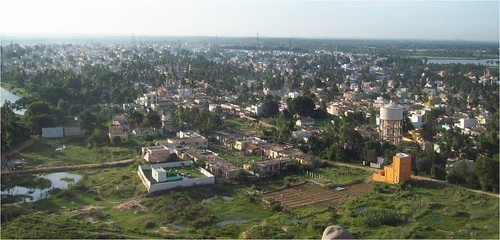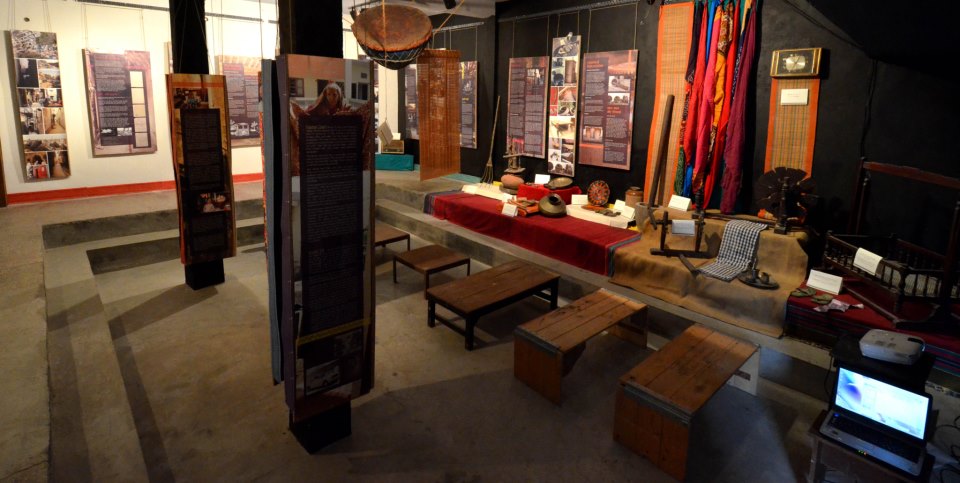Urban Water
Catch Every Drop: The Water Warrior contest
Posted on 27 Feb, 2013 06:08 PMImagine there's no water
It isn't hard to do
Nothing to cook or clean with
And no flushing too!
Imagine all the people
Living life in vain
Water in India: Situation and prospects: Book release by UNICEF, FAO and SaciWaters
Posted on 26 Feb, 2013 06:13 PMThe report released at UNDP, New Delhi on February 14, 2013 attempts to consolidate the significant amounts of information available on water and sanitation in India and also aims to examine the key current challenges in the sector; both the threats and opportunities for the water sector in India.
Dr Aidan Cronin, Water, Sanitation and Hygiene Specialist, UNICEF gives a sneak preview to the report
Video courtesy: UNICEF
Living on water: An architect constructs homes, offices and even a golf course as floating buildings, using water as a workable layer
Posted on 22 Feb, 2013 03:06 PMImagine looking out of your window onto the blue sea, living in a building in the midst of water! Koen Olthius, a Dutch architect’s passion for water has transformed this magical image into reality.
Assessing the land use change and its impact on water resources: A study on the Mula and Mutha rivers catchment area in Pune
Posted on 17 Feb, 2013 09:11 PMLand use changes hydrologic system and have potentially large impacts on water resources. An assessment in an area with seasonally limited water availability and which is subject to rapid socio- economic development and population growth will provide an exemplary view on the local impacts of major recent developments in India. In this backdrop this paper analyzes past land use changes between 1989 and 2009 and their impacts on the water balance in the Mula and Mutha Rivers catchment upstream of Pune. The aim of the paper is:
- assess the land use changes between 1989/1990 and 2009/2010
- analyze the impacts of these changes on the long-term water balance components in the Mula and Mutha Rivers catchment upstream of the city of Pune.
Influence of anthropogenic contamination on fluoride concentration in groundwater: A study of Mulbagal town, Kolar district, Karnataka
Posted on 15 Feb, 2013 04:53 PMGroundwater contamination is a serious, but relatively ignored issue in the country. This contamination occurs in either through geogenic or anthropogenic means. Fluoride contamination is one such example of geogenic contamination that is widely found in the Kolar district of Karnataka. However, the fluoride levels in the town of Mulbagal are lower than those in the surroundings. Earlier, a study was conducted on the impact of pit toilets on the groundwater in the area. The present paper investigates the presence of any link between these two phenomena.
Handbook for flood protection, anti-erosion and river training works by Central Water Commission (2012)
Posted on 13 Feb, 2013 09:43 PMThis handbook by Central Water Commission aims to provide necessary guidance to the field engineers in the state and central for design, appraisal, construction and monitoring of the flood management works covering all the relevant BIS codes, design manuals, guidelines, technical specifications for construction materials and practices etc. to meet new challenges in the flood management in India.
Guidelines for decentralized wastewater management by Ministry of Urban Development (2012)
Posted on 12 Feb, 2013 07:36 PMThis guideline is prepared by the Centre of Excellence in the area of Decentralized Wastewater Management, in the Department of Civil Engineering at Indian Institute of Technology, Madras, which comes under Ministry of Urban Development
An exhibition at Studio Safdar in Shadi Khampur traces the history of the urban village and its water systems
Posted on 10 Feb, 2013 07:12 PMGuest post: Amita Bhaduri
West Delhi’s dusty neighbourhood, Shadi Khampur now has its own museum, in the traditional brick-and-mortar sense. I live nearby, have worked out of an office here and am familiar with the alleyways. But I got to know only now, what life in the neighbourhood was like. Its rich history and its connect to larger narratives from the past, like the series of land acquisitions in Delhi, the Emergency, and the anti-Sikh riots of 1984 which had gone largely undocumented and unarchived have been chronicled in the Neighbourhood Museum of Local History of Shadi Khampur, at Studio Safdar, a cafe cum bookstore.

Neighbourhood Museum at Studio Safdar
Source: Facebook page on “Public Art Project at Studio Safdar”



